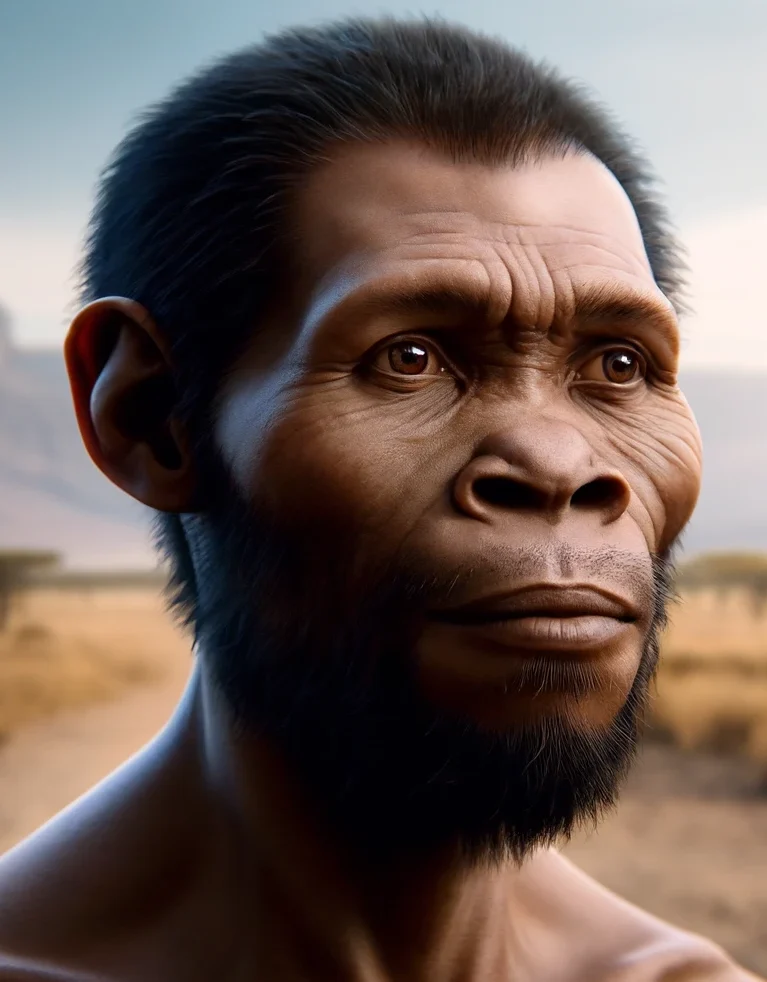Homo rhodesiensis, often regarded as Africa’s counterpart to Europe’s Homo heidelbergensis, represents a pivotal species. Discovered in Kabwe, Zambia, the species exhibits a mix of robust and modern traits with a large brain size and advanced tool use, reflecting significant cognitive capabilities.
Interbreeding Analysis: The evolutionary journey of Homo rhodesiensis might highlight well the complex nature of species development within the genus Homo. As with other human species, the lines between Homo rhodesiensis and its contemporaries were not always clear-cut. Genetic and morphological evidence suggests that early humans, including Homo rhodesiensis, likely engaged in interbreeding with closely related species. This interbreeding could have occurred as they encountered each other in overlapping territories, facilitated by their innate “pioneering spirit” — an inherent drive to explore and adapt to new environments.
Pioneering Spirit and Its Consequences: The inherent exploratory nature of Homo rhodesiensis and other early humans is a defining characteristic of the genus. This “pioneering spirit” not only allowed these hominins to traverse vast and varied landscapes but also to interact and genetically mingle with other emerging human species. Unlike earlier primates that may have been more restricted to specific environments, the mobility of Homo rhodesiensis enabled a dynamic exchange of genes and cultures, potentially accelerating the pace of human evolution.
Analysis: While the exact paths of migration and interaction are still subjects of active research, the adaptability and innovativeness of Homo rhodesiensis likely played a crucial role in their survival and evolutionary success. Their ability to innovate technologically and adapt culturally might have paved the way for the emergence of Homo sapiens in Africa. As such, Homo rhodesiensis not only contributes to our understanding of human evolution but also exemplifies the interconnectedness and fluidity of species boundaries within the genus Homo.












